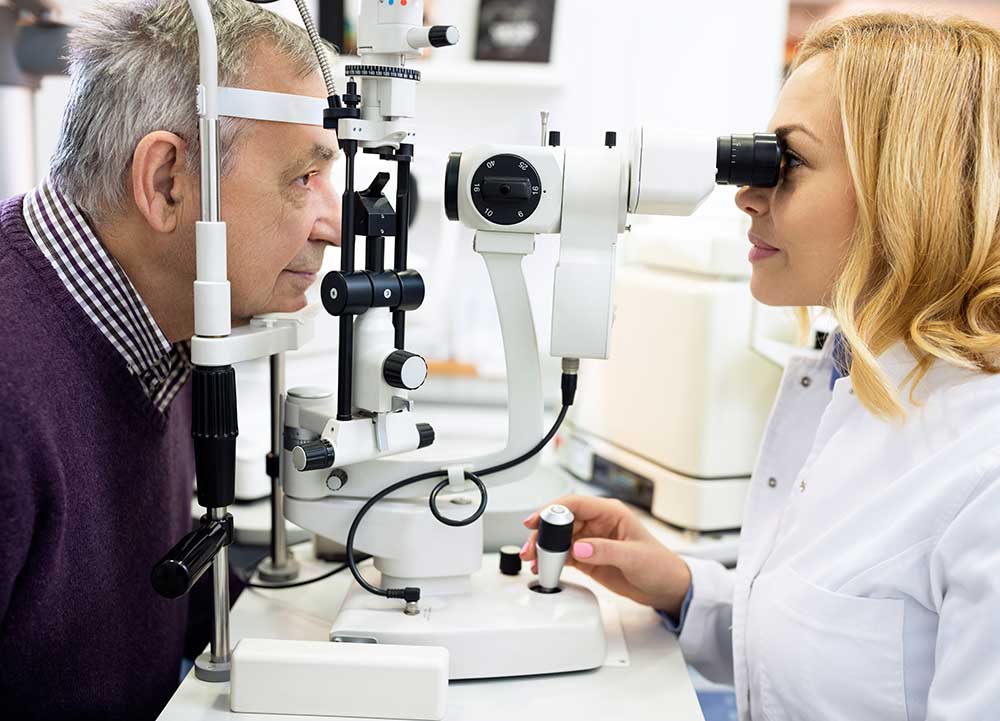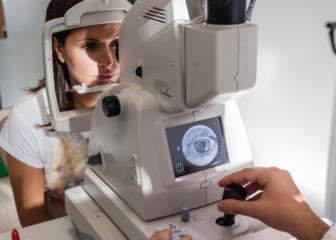Experience Personalized Treatment with Opticore Optometry in Chino
Experience Personalized Treatment with Opticore Optometry in Chino
Blog Article
Discovering the Most Recent Technical Developments in Optometry and What They Mean for Optometrists
In the ever-evolving field of optometry, current technical advancements are reshaping exactly how professionals come close to eye care. From the accuracy of Optical Coherence Tomography to the nuanced understandings used by AI-driven analysis devices, these developments are setting new standards in patient analysis and treatment. Teleoptometry is poised to redefine access, guaranteeing that competence goes beyond geographical limitations. As these improvements permeate the practice, optometrists are faced with the difficulty of embracing these devices to enhance patient end results. Yet, the question stays: exactly how will these technical changes redefine the functions and duties within the career?
Technologies in Diagnostic Equipment
Advancing the field of optometry, developments in analysis tools have reinvented the method eye treatment specialists assess and diagnose visual problems and eye problems. The past years has actually observed significant technological innovations, enabling even more exact and detailed analyses. Optical Comprehensibility Tomography (OCT), for instance, provides high-resolution cross-sectional photos of the retina, enabling the very early discovery of conditions such as glaucoma and age-related macular deterioration. This non-invasive imaging method has ended up being vital in modern optometric technique.
An additional secret development is the intro of advanced corneal topography systems, which map the surface area curvature of the cornea with precision. These devices are particularly helpful for fitting get in touch with lenses and diagnosing corneal conditions. Digital retinal imaging has actually transformed traditional ophthalmoscopy, providing in-depth, breathtaking sights of the retina that facilitate extensive aesthetic examinations.
The development of wavefront aberrometry has likewise been critical, making it possible for the evaluation of refractive errors with unmatched accuracy (Optometrist Chino). This technology assists in personalizing corrective lenses and improving surgical results for refractive surgical treatments. Collectively, these diagnostic innovations encourage eye doctors to provide remarkable person treatment, ensuring early intervention and tailored treatment methods, ultimately improving visual health results
AI in Individual Monitoring
Structure on the foundation of sophisticated analysis tools, the consolidation of fabricated intelligence (AI) in client management stands for a transformative leap for optometry. AI systems are increasingly employed to improve performance, precision, and personalization in client treatment. By assessing huge amounts of information, AI can identify patterns and predict prospective ocular problems, enabling eye doctors to tailor interventions a lot more successfully. This capability is essential in taking care of persistent eye illness such as glaucoma and diabetic retinopathy, where very early discovery and continuous tracking are crucial.
Furthermore, AI-driven systems help with structured person interactions and management procedures. Automated organizing, online consultations, and customized follow-up strategies not only enhance individual fulfillment but also maximize time management for professionals. These systems can triage patients based upon the urgency of their problems, making certain that those in vital need obtain punctual interest.
Furthermore, AI enhances decision-making by supplying optometrists with evidence-based referrals and therapy pathways. By incorporating information from digital health and wellness documents, AI devices offer insights that educate medical choices, reducing the danger of mistakes and boosting patient results. As AI proceeds to evolve, its role in client management will likely increase, improving the landscape of optometric treatment.
Advances in Retinal Imaging
In the world of optometry, retinal imaging has witnessed amazing technological innovations that are improving diagnostic capacities and client care. Advancements such as Optical Comprehensibility Tomography (OCT) and fundus digital photography have actually reinvented exactly how eye doctors envision and examine the retina.
Enhanced imaging techniques like OCT angiography are further refining analysis precision. This non-invasive technique maps blood circulation in the retina, providing crucial understandings into vascular health without the requirement for dye injections. Additionally, flexible optics technology is being incorporated right into retinal imaging systems to remedy ocular aberrations, supplying unprecedented image quality. Such improvements facilitate the recognition of minute retinal modifications that can represent condition development.
Additionally, innovations in synthetic knowledge are enhancing retinal imaging by enabling computerized analysis of huge datasets. These systems aid eye doctors in identifying patterns a measure of pathology, therefore boosting diagnostic precision and efficiency. Collectively, these technologies are transforming retinal imaging right into a cornerstone of contemporary eye care, improving outcomes and expanding restorative possibilities.
Teleoptometry's Expanding Duty
Teleoptometry is increasingly ending up being a crucial component of eye treatment, driven by advancements in data and analysis devices. As optometry welcomes electronic improvement, teleoptometry facilitates remote appointments, permitting eye doctors to prolong their solutions past standard limits. This is particularly beneficial in rural and underserved locations where access to specialized eye treatment is typically restricted. By leveraging high-resolution video conferencing and progressed retinal imaging, optometrists can carry out extensive eye exams from afar, making sure prompt diagnosis and treatment.
The combination of man-made intelligence (AI) further boosts teleoptometry, making it possible for the evaluation of visual click over here now data and helping in the detection of eye problems such as glaucoma and diabetic retinopathy. AI-powered formulas can rapidly analyze complicated imaging data, supplying optometrists with important insights that boost medical decision-making.
Moreover, teleoptometry sustains connection of treatment with smooth assimilation with electronic wellness records (EHRs), allowing eye doctors to preserve thorough individual backgrounds. When seeking advice from with different experts., this makes sure that patients get tailored and consistent care also.
Regardless of these advantages, challenges continue to be, including guaranteeing information safety and security and handling individual expectations. Teleoptometry stands for a substantial stride in the direction of even more obtainable, reliable, and patient-centered eye care. As innovation progresses, its duty is positioned to expand better.

Future Trends in Eye Treatment
A myriad of ingenious trends is set to improve the future of eye treatment, driven by technical developments and the progressing requirements of clients. One considerable pattern is the combination of expert system (AI) in diagnostics, which promises to enhance the precision and effectiveness of eye examinations. AI algorithms can examine substantial quantities of data from retinal images, potentially identifying problems like diabetic retinopathy and glaucoma earlier than traditional methods.
Furthermore, customized medicine is obtaining grip in optometry, with hereditary testing informing tailored treatment plans. This technique aims to enhance client results by customizing interventions to specific hereditary profiles. Wearable modern technology, such as wise call lenses, is additionally on the perspective, using real-time monitoring of intraocular stress or sugar levels, thus giving continuous understandings into eye and systemic health.
The fostering of enhanced fact (AR) and online truth (VIRTUAL REALITY) in training and individual education and learning is another emerging trend. These technologies provide immersive experiences that can boost understanding and skills both for clients and optometrists. As these patterns evolve, eye doctors have to remain abreast of technical innovations to offer cutting-edge treatment, guaranteeing enhanced patient end results and contentment in the dynamic landscape of eye treatment.
Verdict

Jointly, these analysis improvements empower optometrists to deliver exceptional individual treatment, guaranteeing early look at this web-site intervention and tailored treatment approaches, ultimately enhancing aesthetic wellness results.

As these modern technologies continue to develop, optometrists must adapt and integrate them right look at this website into practice, eventually enhancing workflow effectiveness and boosting the criterion of eye care supplied to individuals.
Report this page